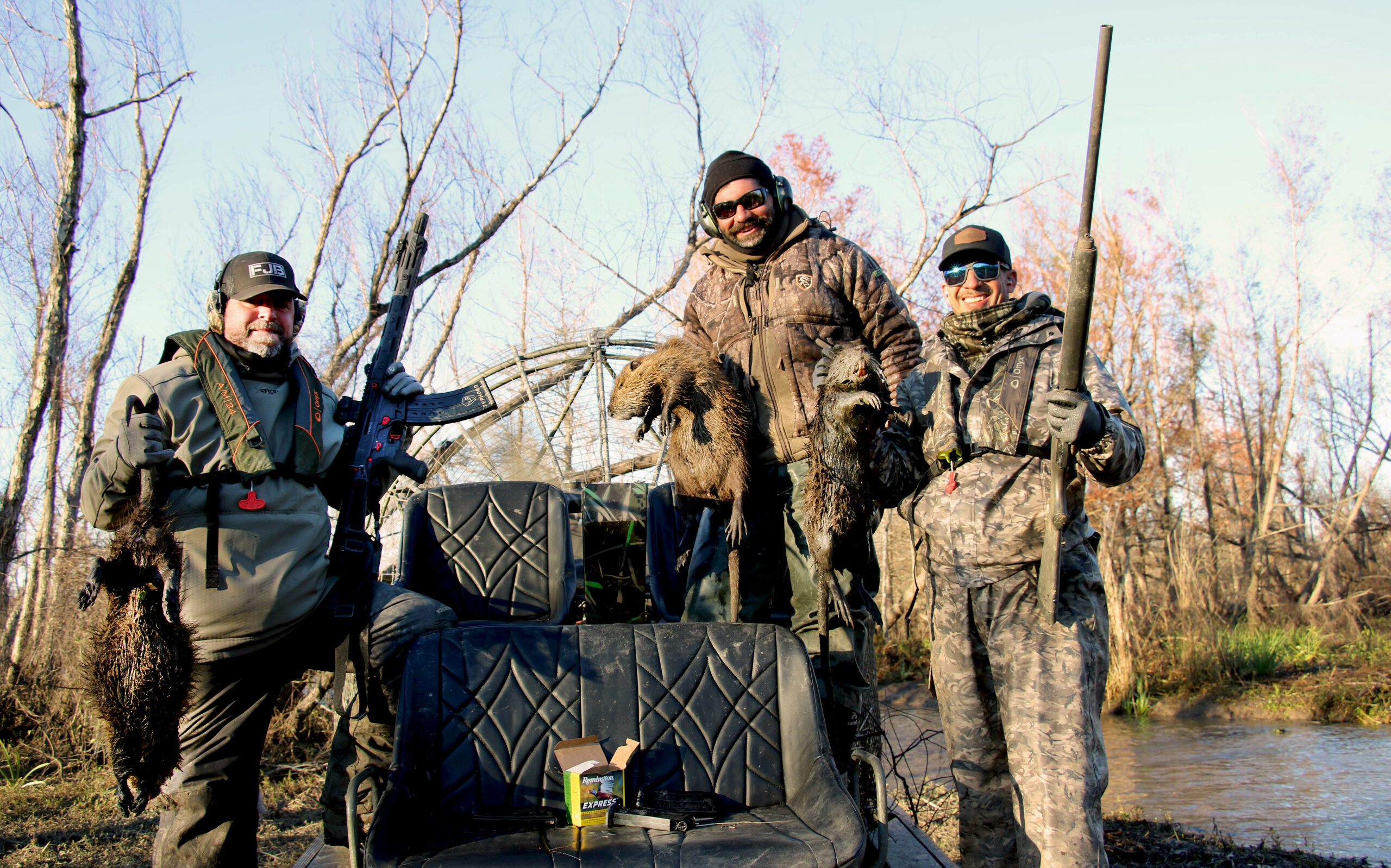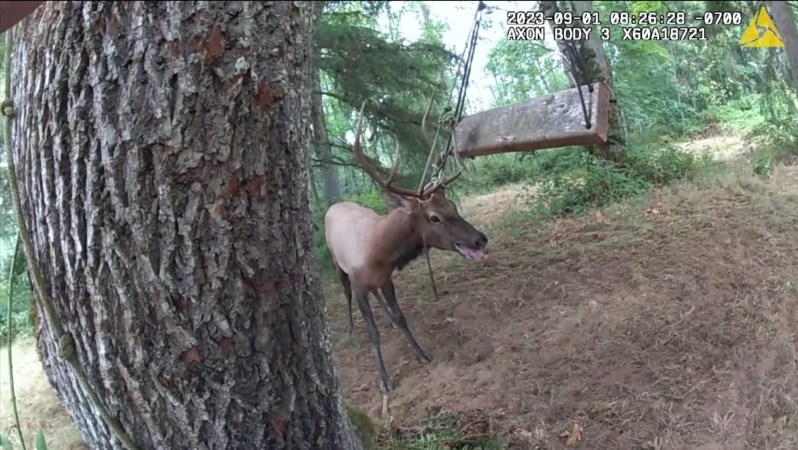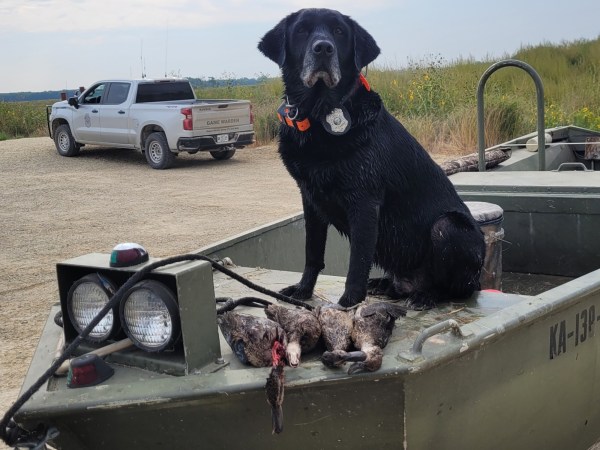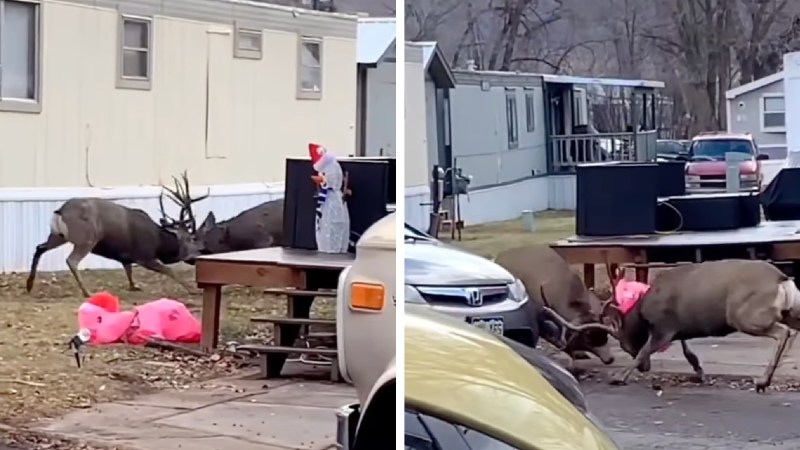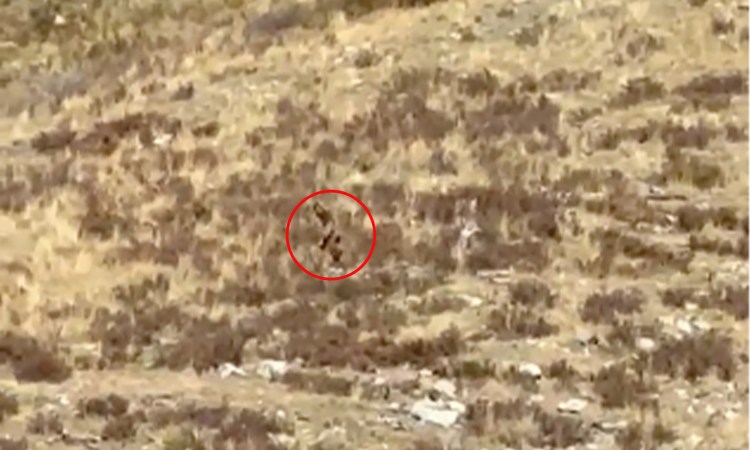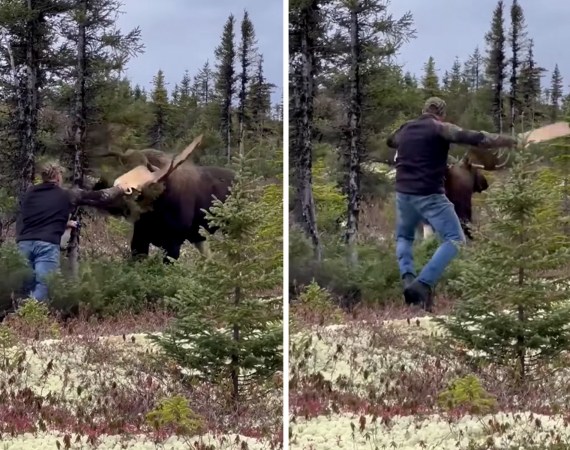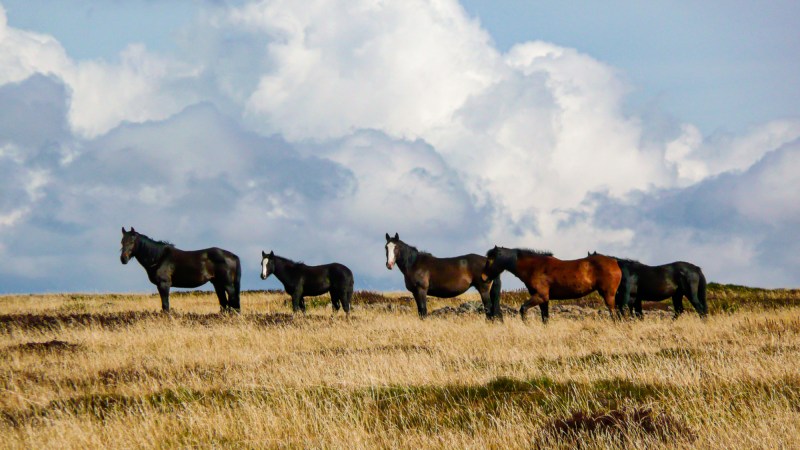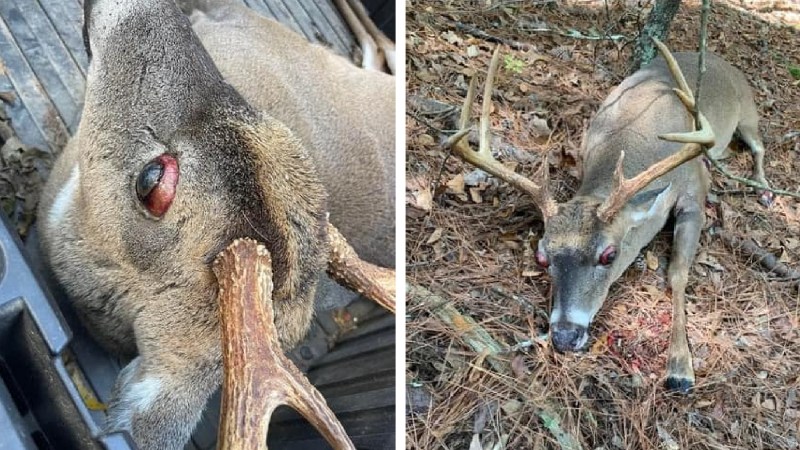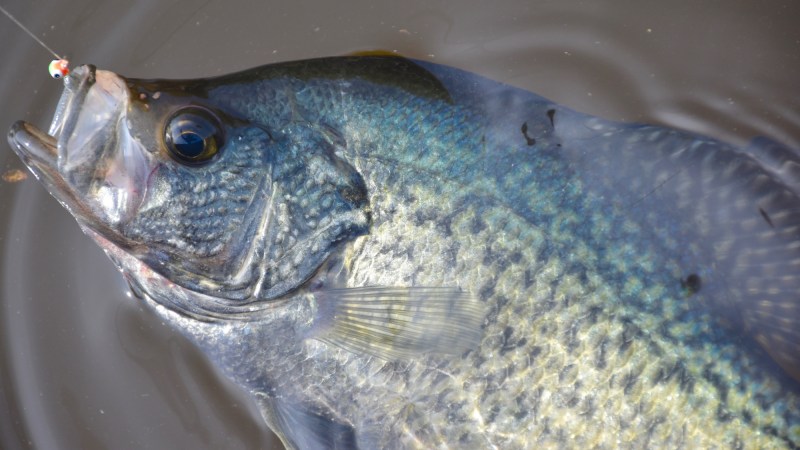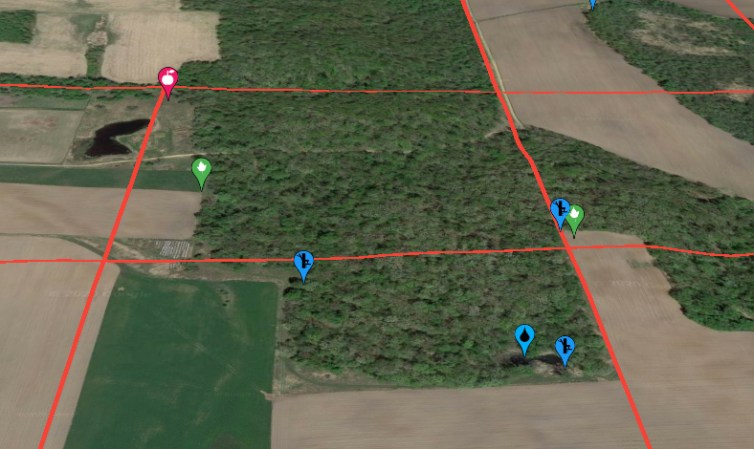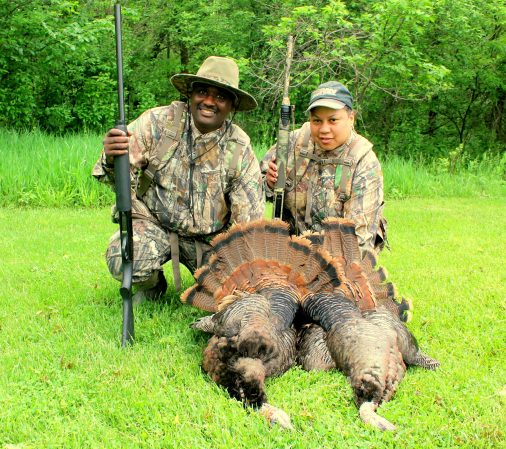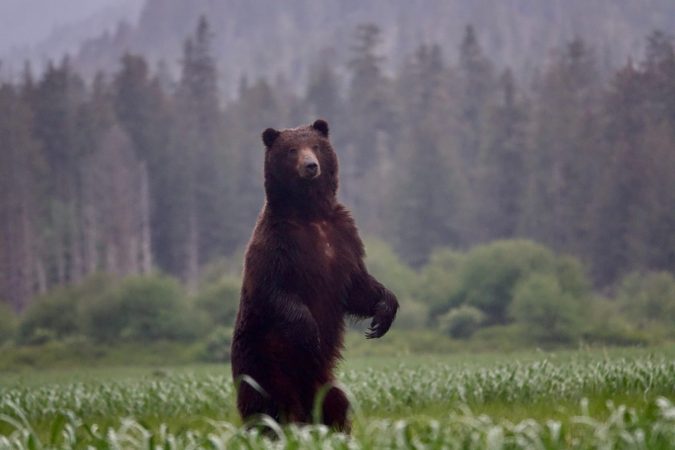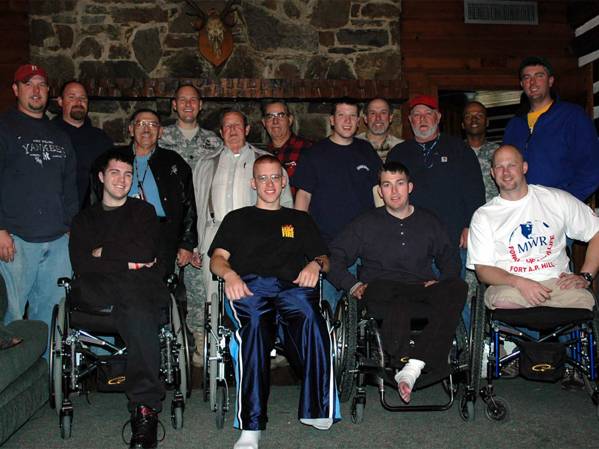As the airboat skids across the mudflat, the two shooters up front draw their beads on the nutria that’s running at one o’clock off the bow. Captain Walter Heathcock accelerates, closing the distance between us and the giant rat, and the 12-gauges thunder over the roar of the boat’s propeller. The pellets spray plumes of water into the air, along with a soggy puff of fur that hangs there for a moment like dust.
Heathcock slows the boat and brings it alongside the dead nutria, taking his left hand off the tiller so he can reach for the gaff behind him. Then, a quick swipe of the long-handled hook and the muddy, oversized rodent flips over the gunnel and into the bottom of the boat, bringing the day’s tally to 53. And after a couple fist-bumps and a quick reload, these boys are ready for more. So Heathcock jams on the gas, spins the airboat around, and sends us flying across the marsh again in search of No. 54.
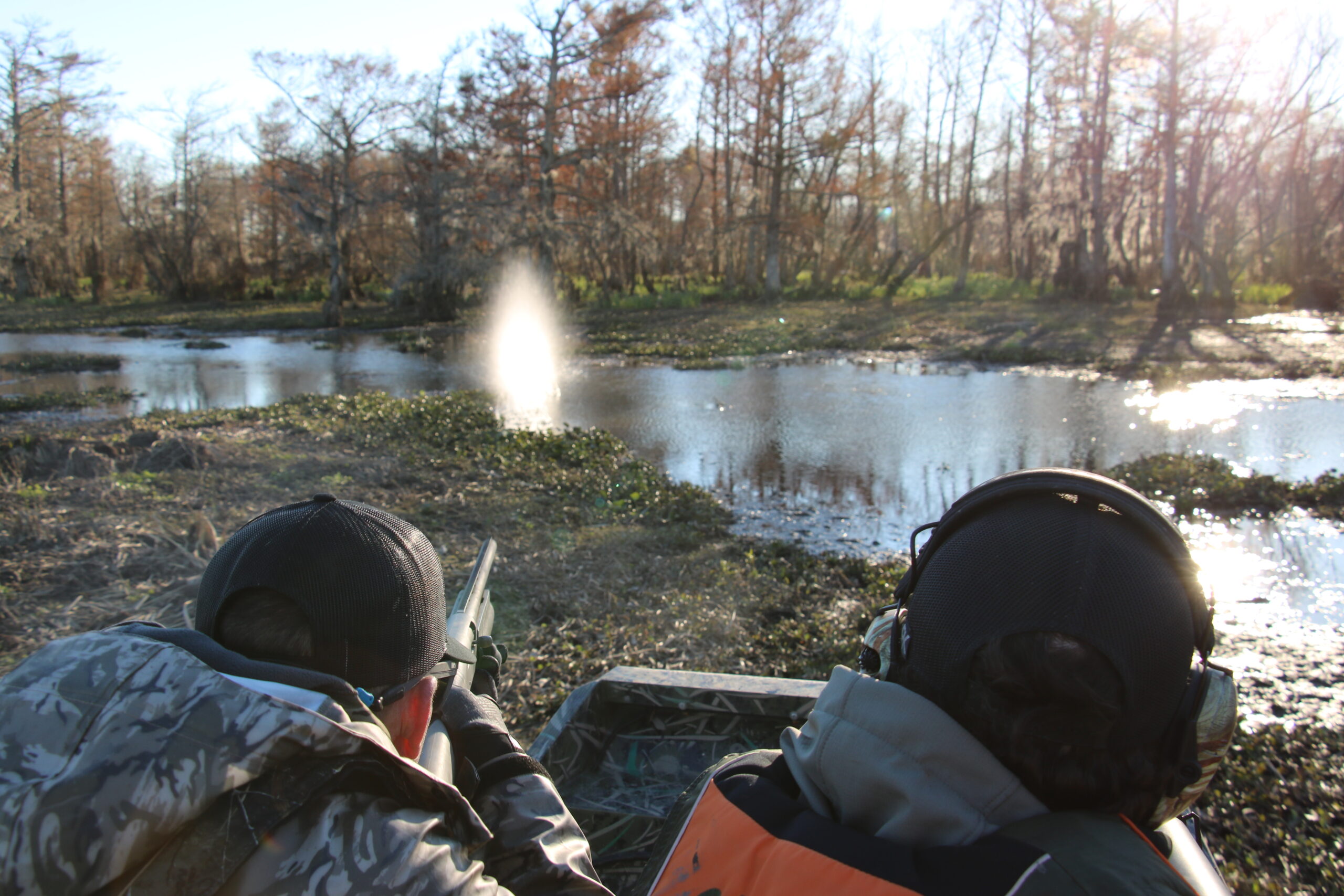
My First Rodeo
Running and gunning across the Louisiana bayou isn’t your typical day afield. Yes, we were hunting. But we were also competing, and our crew was one of 62 teams participating in the 2022 Nutria Rodeo that descended on Venice, Louisiana, last weekend. The concept is simple enough: Eliminate as many rats as possible in two days, and bring them all to the weigh-in at the Venice Marina by 6 p.m. Saturday, Feb. 5. Teams jockeyed to kill the most nutria in the name of conservation—and to maybe earn a bit of cash in the process.
The boat I had talked my way onto that afternoon was captained by Heathcock and crewed by his buddies John Maxwell, from north Texas, and Daniel Reno, from central Mississippi. Maxwell’s business partner, Jackie Murski, rounded out the Outdoor Addicts team, but after a day and a half spent shooting nutria, she was gracious enough to give up her seat to me, a lanky former fishing guide from central Texas who wanted to see the Rodeo first hand.
And if you’re still asking just what in the hell a Nutria Rodeo is, imagine an amateur offshore fishing tournament, but substitute firearms for fishing rods, aluminum airboats for sportfishing yachts, and ugly, buck-toothed rodents instead of trophy tuna and wahoo. Add a rip-roaring Cajun afterparty complete with a zydeco band, a garbage-can sized pot of gumbo, and a rat-tossing contest, and you’re starting to get the picture.
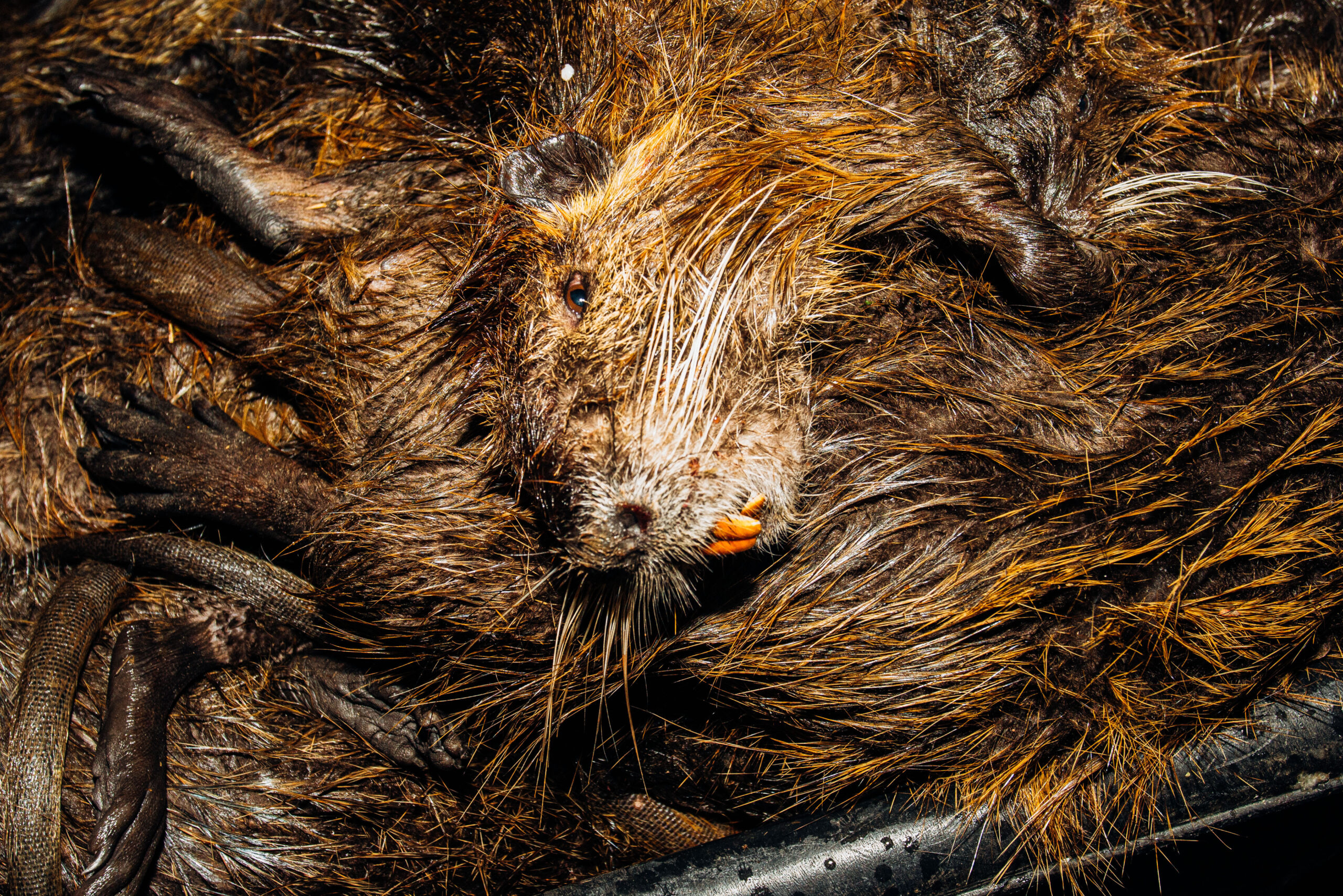
Shoot a Nutria, Save the Marsh
The southernmost point in Sportsman’s Paradise, Venice lies at the end of a narrow peninsula that juts into the heart of the Mississippi Delta. This is where North America’s largest river system spills into the Gulf of Mexico and forms the continent’s largest wetland.
The Delta owes its existence to the Big Muddy. Forty one percent of the U.S. mainland drains into the Mississippi River, which carries roughly 500 million tons of silt annually from its headwaters in the Upper Midwest to the Gulf. This nutrient-rich sediment, deposited over the last 4,500 years or so, has helped create one of the most unique and abundant ecosystems on the planet. The region provides habitat for more than 100 million migratory and resident birds, along with hundreds of other wildlife species and one of the most productive fisheries on the planet.
There’s just one problem: This habitat is shrinking fast. The wetlands are losing ground and getting wetter—too wet—by the year.
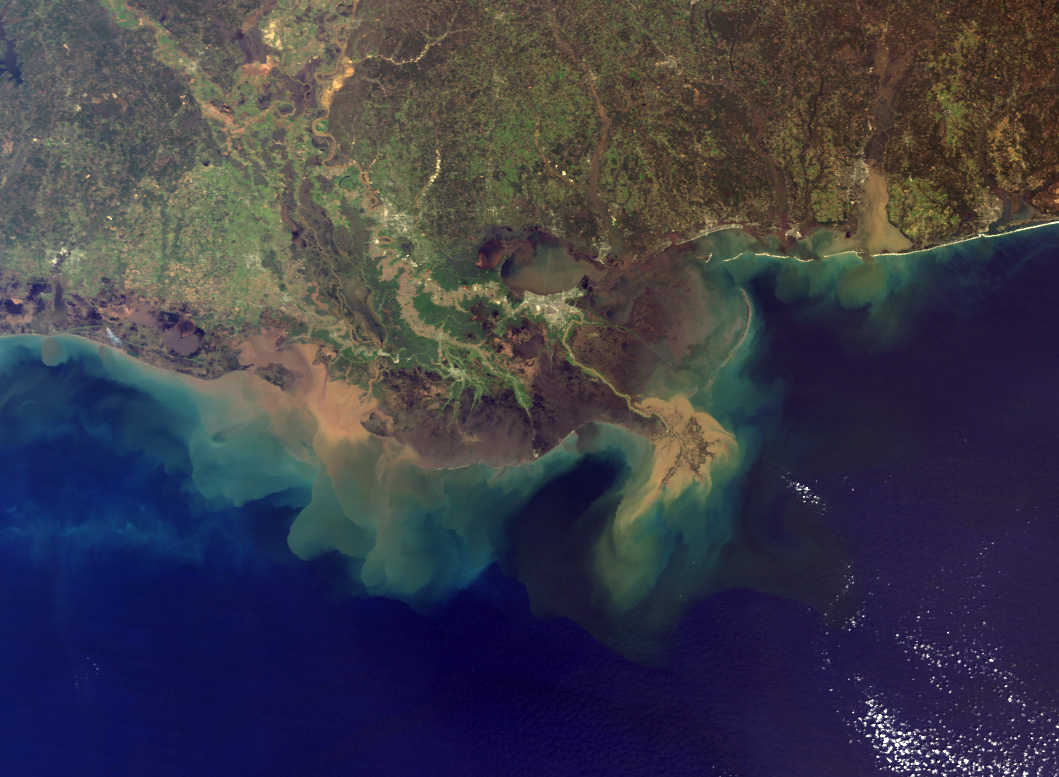
Since 1932, more than 70 percent of the Delta’s wetlands have eroded into open water. And with the lone exception of the hurricanes that batter this region on a regular basis, most of the marsh’s woes are man-made. Dams on the upper Mississippi and its tributaries decrease the amount of fertile silt that makes it downstream, while dikes and levees along the lower river have straightjacketed its flows and restricted its ability to build up new land. Continued channel building and canal dredging allows even more salt water to seep into the marsh, disrupting salinity levels and killing freshwater vegetation. Meanwhile, sea levels in coastal Louisiana are currently rising at a rate of approximately one inch every two years.
There is, however, another force of nature that is literally chewing away at the fabric of the Mississippi Delta. Known as coypu below the equator, these herbivorous rodents from South America eat the roots of the vital wetland plants that hold the soil together. This accelerates erosion, and wrecks the already-imperiled marsh in the process.
A collection of entrepreneurs and enterprising farmers introduced nutria in the 1930s to bolster the local fur trade, and for decades, trappers kept their populations in check. But when the fur industry tanked in the 1980s and the pressure from trappers disappeared, Louisiana’s nutria population exploded.
So in 2002, the Louisiana Department of Wildlife and Fisheries established the Coastwide Nutria Control Program, which pays licensed trappers in the state $6 per tail. According to Jennifer Hogue-Manel, a furbearer biologist with LDWF who manages the CNCP, the program has succeeded in suppressing the state’s overall population.
That population, she explains, has gotten so large and covers such a vast area that it’s impossible to put a number on it. The best the agency can do is conduct aerial surveys that help them estimate the amount of damage the rats are doing on an annual basis. Manuel explains that when the agency first started developing this program back in the early 2000s, these aerial surveys of the Delta showed that nutria were destroying an estimated 80,000 to 100,000 acres of marsh every year.
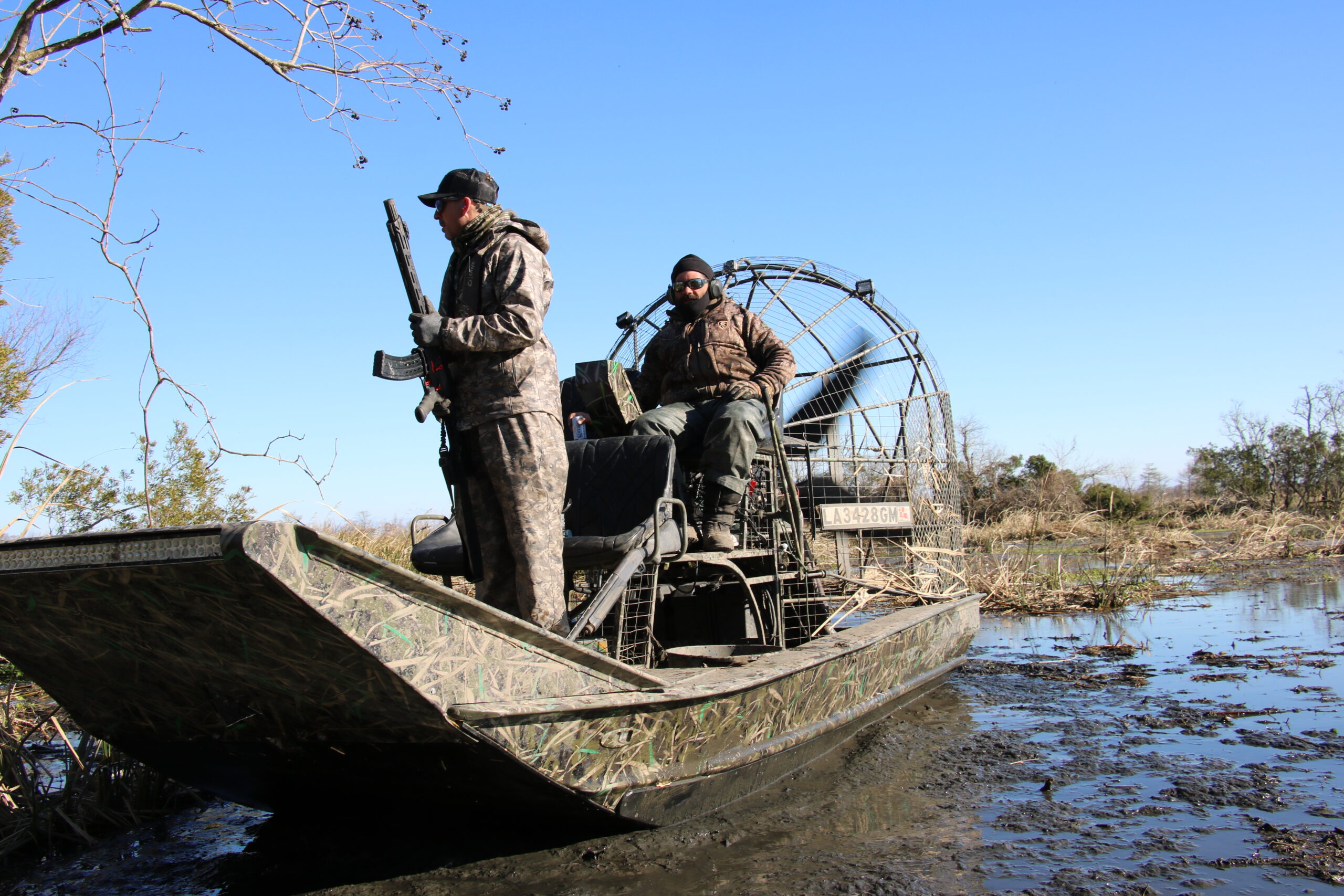
“After all these years of the program, we’re now down to less than 10,000 acres a year,” she says. “We’re never going to eradicate nutria from Louisiana, but we can at least manage their population by incentivizing harvest.”
And although it was not a LDWF-sanctioned event, the 2022 Nutria Rodeo was born of this incentivizing spirit. The long-dormant event, which traditionally took place here in south Plaquemines Parish, was revived by organizer Gabe Macormic in 2021. He figured that even though it wouldn’t solve the myriad problems plaguing the Delta, it was an opportunity to raise awareness around conservation and, well, throw a kickass party. Also, shooting oversized rodents while ripping through the bayou is flat-out fun and, in this case, potentially lucrative. The team that brought in the most rats stood to win $2,000 in cash, while the biggest nutria harvested was worth $1,000, and the top three teams in each category would all walk away with some Benjamins in their pockets.
Friendly competition was its own motivating factor for the 200-plus participants who signed up to stack rats. Bragging rights were on the line, and this was especially true for local guides like Heathcock, who take a certain amount of pride in their knowledge of the marsh and their ability to locate the critters who live there.
Rooting Out Rats
“Hey, Reno. Remember that little bead I showed you on the end of your gun?” Heathcock asks, his deep drawl booming over the idling propeller. “Use it. And quit shootin’ them things in the ass.”
Reno, shaking his head, tosses a heavy rat into the bottom of the boat and hands the gaff back to Heathcock. “I missed one nutria, man.”
“I think I need to find some new friends,” he adds, pulling a pack of cigarettes from his jacket pocket. He then offers the pack to Heathcock—a friendly gesture if there ever was one—and our guide to the wilds of the Mississippi Delta grabs a smoke, lights it, and places it silently between his lips.
Born and raised in the Venice area, Heathcock comes from a family of trappers and commercial fishermen. When he’s not running inshore fishing charters for his company, Fin Twisters Guide Services, he finds other ways to enjoy the Delta’s natural resources. That means not only turning in nutria tails, but trapping crawfish and hunting alligators, ducks, and hogs, too. He’s developed an intimate understanding of the back lakes and bayous of the Louisiana marsh, and much like the boat we were riding on, the burly, bearded guide looks like he was tailor-made for this place.
From the passenger seat, I can see him planning two or three moves ahead, constantly adjusting our speed and course as the slick-bottomed aluminum vessel skips over hummocks, scoots across huge swaths of mud and grass, and drops back into a narrow canal with the grace of an elephantine ballerina. Then we’re zipping across dry land again, steering clear of cypress knees that would wreck an airboat faster than you could say “swamp rat.”
It’s almost 5 o’clock on the second day of the Rodeo, which means we have to get moving if we want to make the weigh-in. But first, we have to find a way to fish these dead nutria out of the heavy cover.
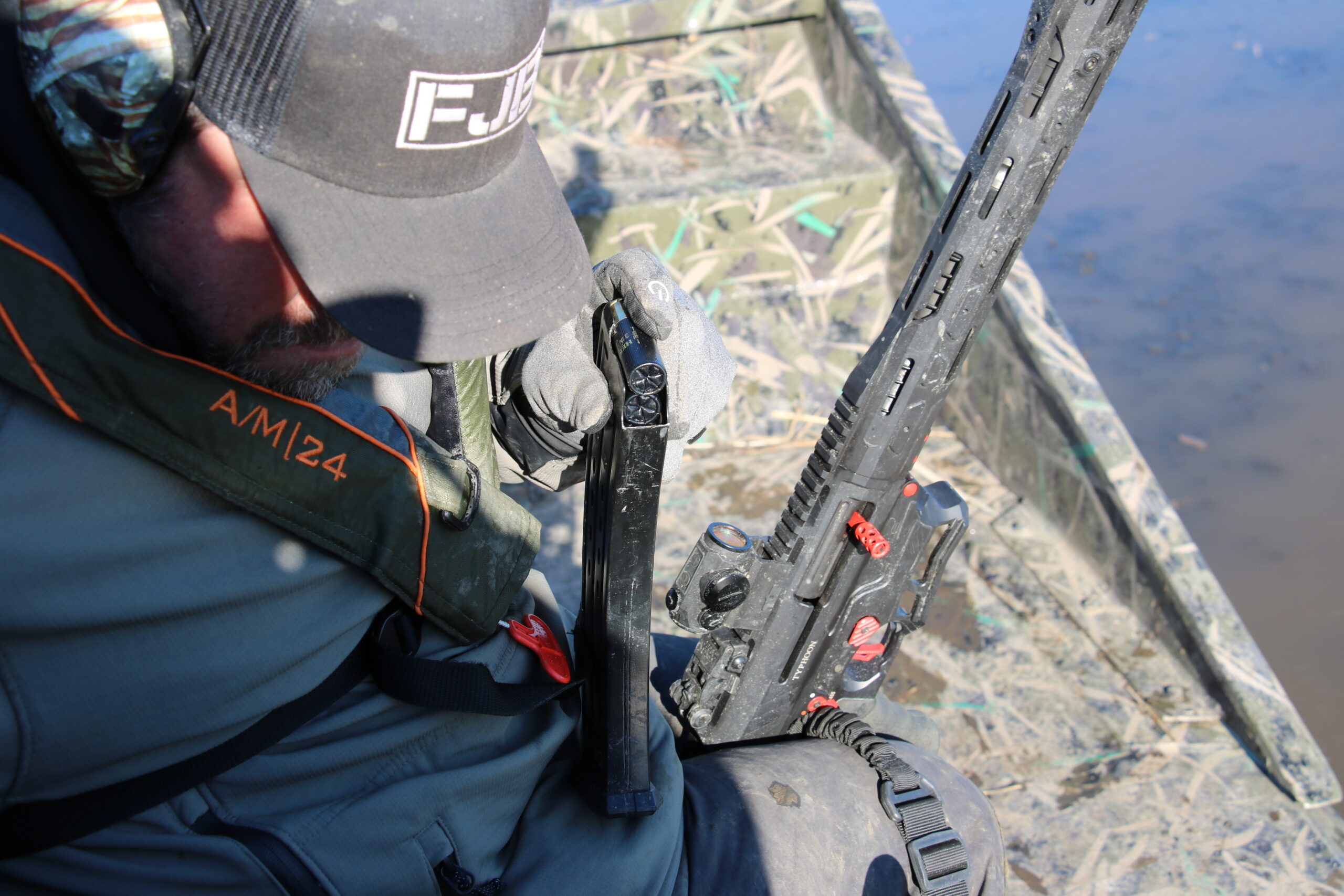
Like many of the other rats we spotted this afternoon, these two were sticking tight to the trees as they sheltered from the cold north wind. The loud whirring of the airboat’s fan would spook them, and they’d run full-tilt towards the next patch of trees. The boys up front would fire, bark would fly, and Maxwell and Reno were able to drop most of these runners in their tracks. But the hardest part is actually getting them in the boat.
Wounded rats have a knack for burying themselves in the weeds, under downed logs, and deep in the roseau cane. This is where the gaff comes in handy. Because even though many spots look safe enough to step out of the airboat and retrieve one on foot, chances are you’ll find yourself sinking into waist-deep gumbo.
Around 5:15, Heathcock swings No. 67, our last nutria of the day, overboard. The soggy, disheveled rat drops with a thunk. With beady little eyes and orange teeth, this is a face that only a mother could love. (And even then, these females tend to ditch their young after a couple of months.) If it wasn’t for the sheer number of them lying at my feet, it would be hard for me to believe this raggedy, rattier cousin of the North American beaver can do so much damage to the marsh.
“If You Can’t Beat ‘Em, Eat ‘Em”
Back at the Venice Marina that evening, a zydeco band covers Brooks and Dunn’s “Neon Moon” while the rats pile up. Teams bring them in by the boatload and the truckload, dumping wheelbarrow after wheelbarrow into a heap on the parking lot. Every nutria counts toward a team’s total, while the fattest rats are then singled out to be weighed on a spring-scale.
Once every critter is accounted for, Macormic tallies up the grand total: 1,934 nutria removed from the Delta. That’s a lot of rats, although it’s still just a fraction of the state’s annual goal of removing 400,000 nutria. The team with the most nutria, Gutta Gutta Tail Cutta, finishes with 423. Our team, the Outdoor Addicts, places fifth, with 141 nutria to their credit after two days of hunting. The second, third, and fourth-place teams all brought in at least 200 rats apiece, and the fattest rat of the Rodeo weighs in at 21.7 pounds.
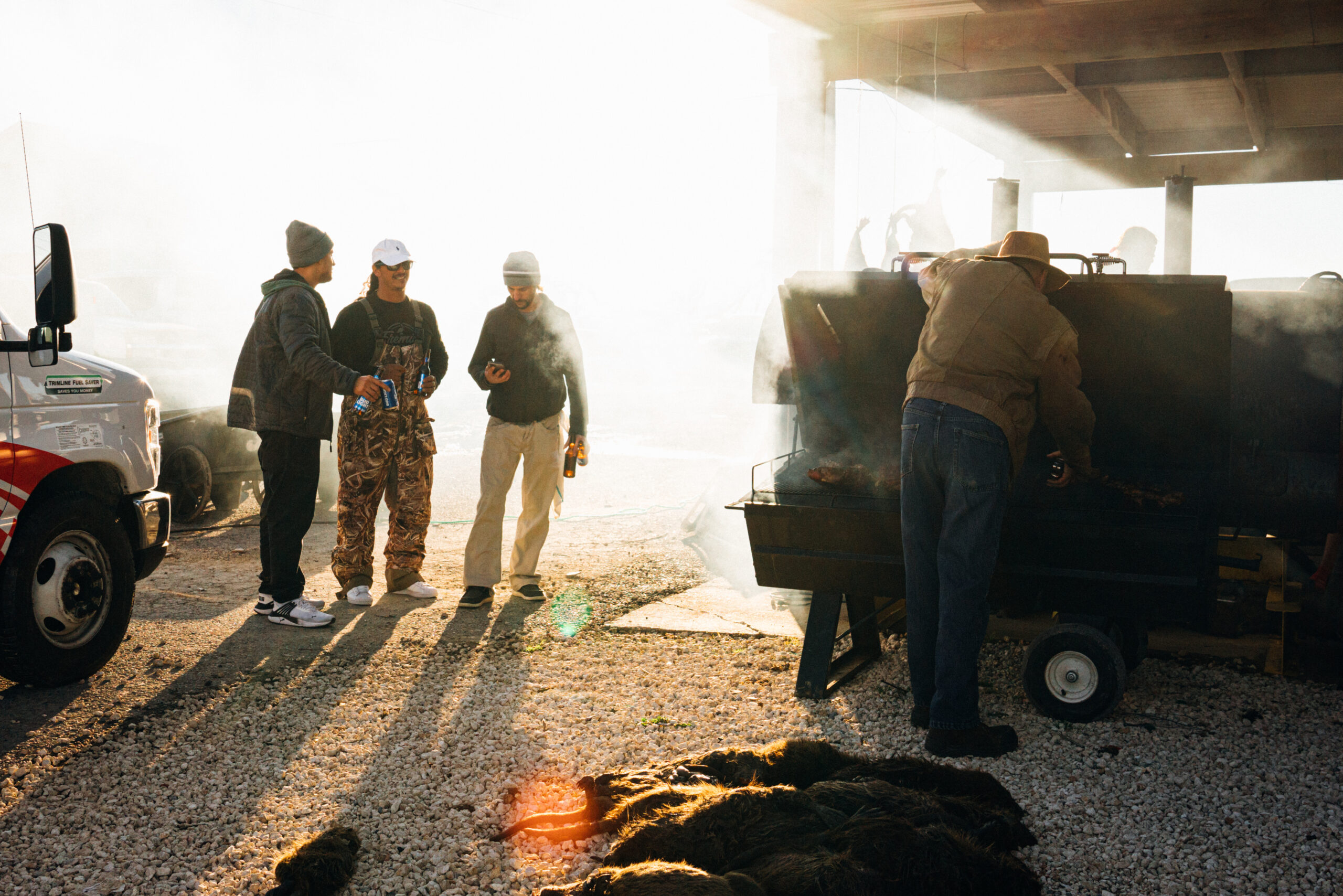
Many of these are destined for the New Orleans Zoo, where they’ll be turned into alligator food. But a dozen are carried to the fish-cleaning station where they’re gutted, skinned, and butchered. Once cleaned, they’ll end up in the biggest gumbo pot I’ve ever seen.
After 20-plus years in the world of fine French dining, chef Phillipe Parola started developing recipes for invasive species. In the process, he’s created a market that promotes the culling of these environmentally destructive critters, and he’s found plenty of ways to put all that meat to good use. His motto? “If you can’t beat ‘em, eat em.”
Read Next: Hunting Nutria in the Louisiana Bayou
From Asian carp almondine and lionfish ceviche to wild boar chili and kudzu quiche, Parola’s recipe list turns problems into something palatable. And although it’s been somewhat of a challenge to turn consumers onto the idea of eating oversized swamp rats, he has figured out several ways to turn one of the ugliest critters in the bayou into delicacies like Nutria à l’Orange and Culotte de Nutria à la Moutarde. For this party, though, he opted for the classic soup-and-rice dish that has become synonymous with this part of the world.
“You know what’s really sad?” he asks, stirring a huge pot with a metal paddle, his French-creole accent thick as a slow-simmered roux. “We give our kids in public schools a piece of cafeteria pizza to eat. But these guys are high in protein, they’re lean, and they make perfect sausage.”
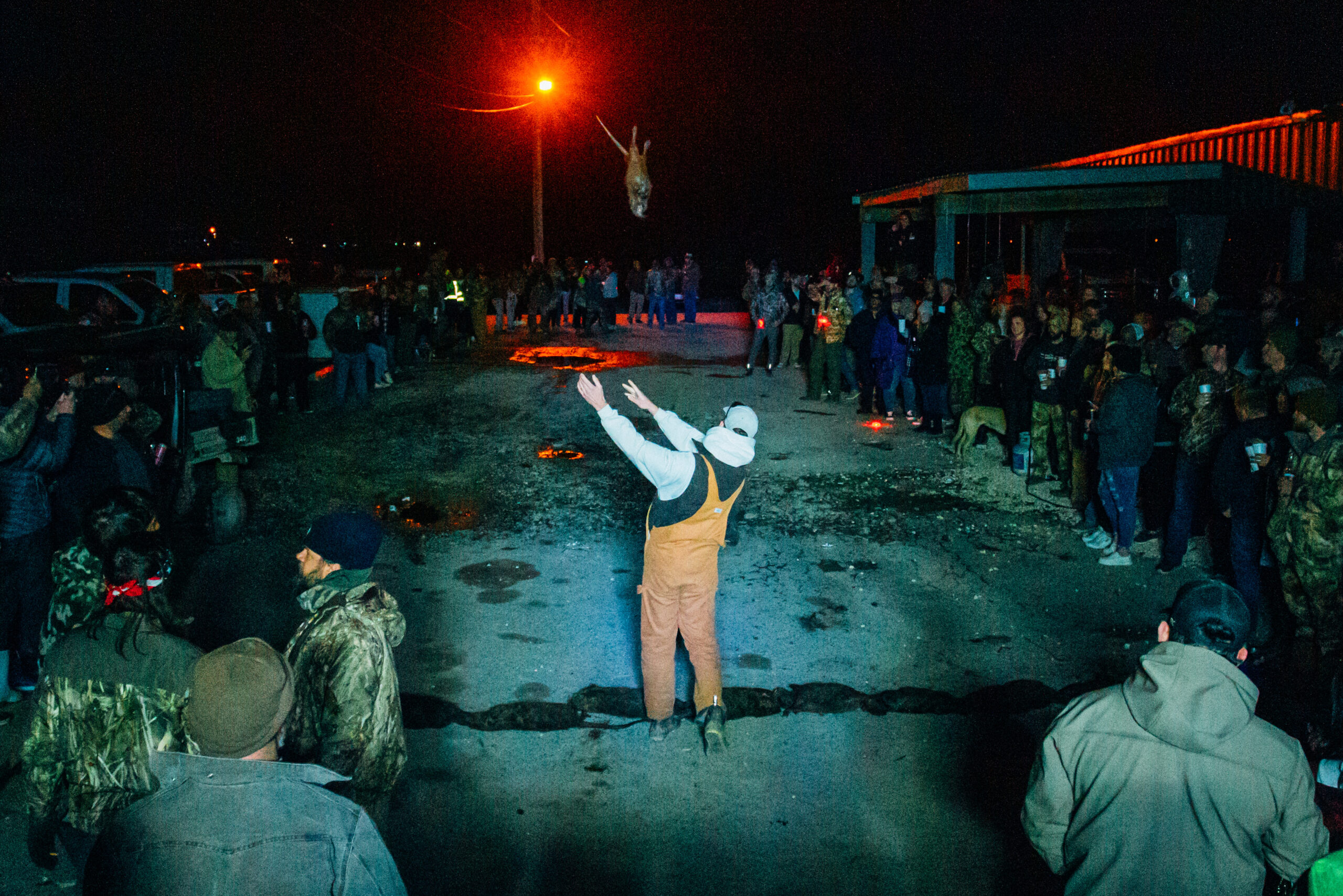
Like most experienced cooks, Parola detests waste. He also just wants to share good food. And the nutria gumbo is, somehow, magnifique. In fact, the cup of rich, hot stew pairs so well with a cold Miller Lite that I go back for another round of each. On my second trip through the gumbo line, a local fellow named Squirrel introduces me to the baby nutria in his pocket while a large crowd gathers in the parking lot. It’s time for the big event that precedes the award ceremony: The nutria toss.
And as I look on, making note of all the different ways that you can chuck a dead rat—including the softball pitch, the angry-father grab, and the inebriated sideways toss that flies out of bounds and cracks a windshield—I think to myself, only in the Delta.

